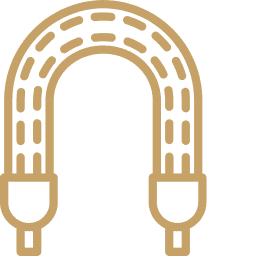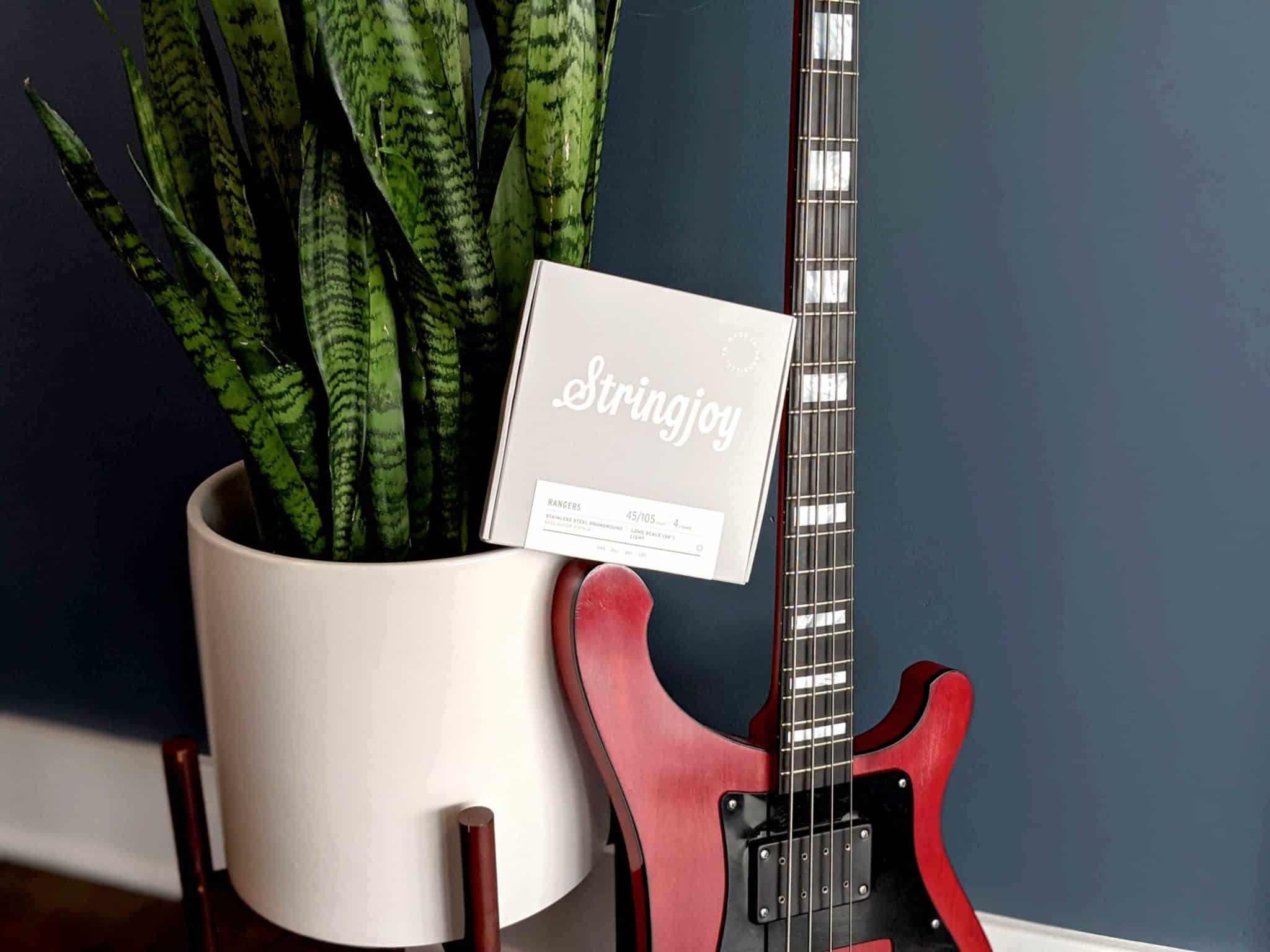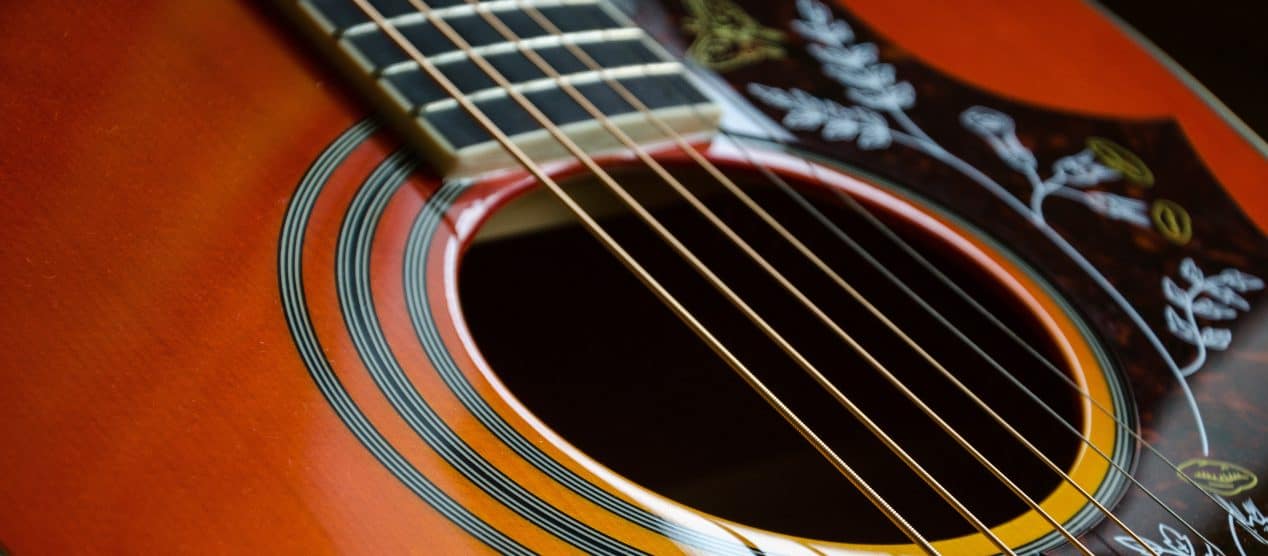Is Up is the new Drop? Definitely not. But what’s wrong with tuning up above the highest E on a guitar? We talk about what happens when you do it, and how high you can go before you break a string.
Transcription
You’ve got a lot of frets on a guitar, but odds are you’re probably not really using all of them equally. If you’re a shredder, you probably play above the 12th fret quite a bit. If you’re like me, probably not as often. And if you’re the Marlboro man, you probably only really play on the first three frets. (We call ’em cowboy chords. It’s a, it’s a cowboy joke… )
But no matter what type of guitarist you are, it’s pretty likely that you’re probably spending more time on the bottom end of the fretboard, you know, frets one through five or one through eight or ten or whatever, than you are on the top end of the fretboard. So for that reason, I think it’s a lot more common for players to want to tune down because you’re playing at the bottom end and thinking like, hey, I wish I had a lower note than this low E, whereas it’s pretty rare that you’re like hitting up against that 21st fret on your high E and you’re like, man, I wish I could go higher than that.
Seriously, I’ve helped like 20,000 to 30,000 players out, picking individual gauges for different tunings and stuff, and I see people wanting to tune down to B or D or C or G or F sharp, E below E, all sorts of crazy stuff. I have over that time had exactly zero people, ever want to tune up to F sharp or up to G.
So it’s, it’s pretty rare, but there are some other reasons why you might want to tune your guitar up. You might be playing in new standard tuning like we talked about in another video, or maybe you are playing a seven-string guitar and want what I like to call reverse seventh string tuning (we’ll get into that later), where for whatever reason you need a note that’s higher than E for maybe you want to go up to G or a or B or whatever.
Now, if you’ve ever emailed me about this in the past, you’ve probably heard me tell you that it’s a bad idea. And today we’re going to talk about why that is.
The Perils of Tuning Higher
So you see E4 all the time. That’s the highest open string on a standard guitar. But the highest you really see in general is like on a 12 string guitar, you see a G4 there and that’s the octave note on that third string. So in 12 string guitars, if you’re not familiar, you have octave notes on strings three through six, you don’t have them on strings two and one. Those are both tuned to unison. And the reason for that is exactly what we’re talking about today. If you tried to get to an octave B or God forbid a an E5, like an octave E, that’s just not really doable on a guitar—at all.
The most extreme case I see quasi-often, is when people do what I call a reverse seven string tuning. So instead of trying to go with a low B, they try to go with a high a. So that would be an A4, you see some players doing that but not very successfully. You can do it, but you’ll only be doing it for like 30 minutes before the string breaks. And that makes sense because honestly, most of the players that I see get away with an A4 are people that are touring and they have a tech and they have like 12 guitars that they tour with. So their tech can set up one guitar to have that high A4. They can play it for that song and as long as it lasts for three minutes and they’re good.
But you, dear reader, if you want to tune high, you probably don’t want to have a string that lasts for four minutes and then breaks and you probably don’t have a guitar lackey to grab it from you and change it to another string so that you can get right back to it. And you don’t want to spend your whole day changing strings every five minutes so that you can play in this tuning. So today we’re looking into how high you can reasonably tune a guitar without having a whole bunch of issues.
So if you take a given string of the same material and the same dimensional properties there, I’m talking about like the diameter of the string and the length of the string’s scale length. If you take all those things being the same and then you try to tune up to a higher note, what you’re doing is you’re increasing the tension on that string. What’s tension, Scott? I’ll tell you. Tension is an axial pulling force. In layman’s terms, kind of what this is doing is it’s creating a force that’s acting against the string as it’s resonating. So instead of the string resonating really, really widely with a wide wave length, when it has higher tension that’s pulling against it, causing it to have, you know, kind of a shorter wave length there. It’s not a shorter wavelength. (Editor’s note: It’s less amplitude of the wavelength.)
If you’re familiar a bit with how waves work, when you have something that’s vibrating, you know, in a much more small kind of pattern like that. And I know, I know science folks, I’m not doing the best job there, but I’m doing my best. The frequency is going to be higher because the string is going up and down a lot more times where if it’s going like this in the same amount of time, it’s going to have a lower frequency, lower frequency, lower pitch, higher frequency, higher pitch. So this tension is directly related with that pitch. Now the thing is that tension also creates stress on the string, which in a lot of cases can make breakage more likely.
Now in general, the smaller the diameter of wire, the lower the force to break. So I’ve got a few numbers from our specs here. So a 12 gauge string, which is 0.0120 inches generally takes 44 to 48 pounds to break, at the same time, an eight, so 0.0080 takes 22 to 24 pounds to break, which is about half that of a 12. So you might be thinking, why not use a 12 to tune to A4 instead of using something like an eight or a nine or something like that? Well, the issue is when you tune a larger diameter string higher, you’re putting it under more pounds of tension in order to get to the same note. So an eight when it’s tuned up to A4 is at 20.3 pounds tension, just below it’s force to break. The force to break we looked at earlier was 22 to 24 and we’re at 20.3.
So we’re kinda like just right up near that. And doing a 12 at A4 is going to put you under 46 pounds tension. But that 46 pounds tension is basically right within that 44 to 48 pounds forced to break range. So because of that, you know, we’re both kind of in tricky circumstances trying to get up to A4, but you’re gonna be better off with that eight than you are with that 12, even though the 12 is more durable, you’re more in it’s force to break range if that makes some sense.
Now one more side note and we’ll be done with all this like kind of dense more numerical business. You might be hearing these numbers that I’m spitting out and you might be glazing over or you might be paying more attention, than I think and saying like, all right, we’re at 20.3 pounds tension, our force to break is 22 to 24. So we’re like super good to have an eight at A4, right? Well, the issue is that’s just like our tension in theory when a note is open. When you bend a string, what you’re doing is you’re adding more tension. It depends on the string, but you might be able to add even, you know, eight, 10 pounds tension depending on how high up you’re bending it.
So even if you’re slightly below the force to break at an open note, once you bend a little bit, that string’s just gonna pop. Additionally, in most like engineering purposes or anything like that, you’re going to want to be like way below the force to break. With strings, we tend to get a little bit crazier in terms of what we require out of wire. So you’ll see things where it’s only a few pounds below the force to break. Generally you want as much head room there as possible so that you’re not breaking strings whenever you bend.
So now that we’ve explained all of the reasons why it’s a bad idea, screw it, let’s take some strings and tune them up really high and see how high we can get before they snap. Now please know I am not a scientist, nor do I play one on YouTube. But if you were doing this in a more scientific way, you would want a really, really wide sample size. Today we’re not going to break 70 strings to get a decent sample. We’re going to do like two and uh, and just kind of see what happens there.
The Test
Note: This will probably make more sense in the video above than in the transcription, but we included it here anyway in case it’s helpful.
So, all right, I’ve got my double safety glasses on just in case this breaks and by in case, I mean it’s gonna break, we’re gonna make it break. So, you know, always wear proper eye protection. So, I’ve got a 10 here, tuned up to E on our second string as a reference pitch, and we’re going to take our first string, which is an eight and a half, and we’re going to tune it up until it breaks. Let’s see how high we can get it. So first up we’ll take it to, let’s take a F sharp
All right, so no real problem at F sharp. We can even bend a little bit and it’s not snapping on us. All right, let’s take it up to G.
All right, so we’re there. We’re starting to get a little bit tighter. Well, we can still bend and we’re doing this on the tune-o-matic bridge. So I mean, if anything is going to break it, it’s going to be that. Let’s see if we can get up to A. Oh boy.
It’s getting tough. Trying to go slow. All right, so we are there. It’s pretty tight and I’m nervous about bending it. So let’s see, we are here at B. Let’s see if we can get to C.
Whoa, it got me, Oh yeah. Draw a little bit of blood. The hazards we go through to show you what’s possible. So we got to B, it probably wasn’t long for this world at B. And we got just to C before she finally snapped on us. Let me see if I can find a bandaid and then we’ll try this whole thing with a seven again. All right, we’re back. I’ve got a seven installed. Let’s see if we can get it any higher than the eight and a half or if maybe even it’ll give out before that, since it’s quite a bit weaker of a string. So same story. I’ve got a tuned to E, it was tuned to C before, and let’s see what we can do. Let’s start off with F sharp.
No problem there.
All right, let’s take it up to G.
Not a problem there and it’s still got a lot of slink in it. I mean it is, it’s a seven, so it’s like angel hair at this point. All right, let’s go a little bit higher. Let’s see if we can get it to a…yup.
We’re already losing it. It might just be coming through the tuning peg back here. Since it’s such a small wire, it’s hard to really anchor it with the friction around the tuning key. So we lost a lot, some slip through. So we’re up to A now, and it’s not a problem. Let’s see if we can a little bit higher than we did in the last one.
B was never really never doable last time. I think I might’ve even called it C but we weren’t able to get to B. There’s B flat. Let’s see if we can get to B.
Oh yeah, it didn’t get me this time. Oh, all right. I only drew blood twice. That’s a, that’s a success in a video. So that one didn’t quite get any higher. So it’s interesting there, right? Like we have a smaller string, which in theory, you know, would be easier to tune up higher. But that curve that we kind of talked about earlier with the force to break, versus the amount of tension we have to put on it to get it to a certain note kinda causes things to level out a little bit at that point. And that’s the reason that I usually recommend to people to try something like an eight and a half or an eight if you’re trying to go up really high. When you get down to a seven thinks get a little bit wild and God forbid if you went with like a six or something, I’d honestly be surprised if you could get it up much above E really.
So what did we learn today? We learned that you shouldn’t do this. Don’t make yourself bleed at home. And if you do, don’t say that I told you to, because I didn’t. But what we really learned is that G is definitely very doable. A was doable in both of our tests. I don’t really have a lot of faith in how that would hold up for like 30 minutes or an hour or God, you know, a day of playing. But it’s definitely possible, and at least for us, for right now and for this guitar, it’s really not possible to get up much above A, we got to like B flat. And that was okay. B was definitely not doable.
So, you know, there you have it. If you want to play around with some really high tunings, I’d recommend starting with something like an eight or eight and a half. We have sevens too. They can be a little bit frail and finicky. I’m not really a huge fan of them for most purposes. But you know, as always, do what you want. Try things, do things that are weird. I don’t know. Make your guitar play the way that you want it to. That’s the goal right?








10 Responses
If I tune guitar to F#, will it break guitar neck?
I’m curious about the risk of tuning the A string up to B. I have written a couple of songs in this alternate open G tuning, D B D G B D. I don’t even remember how I ended up doing this but it works for me. I have a fender jaguar, so I have to go heavy on the bottom anyways, wondering what gauge A string I should go with to minimize risk. My concern is not with breaking string but it doing some long term damage to the neck I guess. ?
There’s no risk in tuning your A up to B as long as you go with a lighter gauge. If you use a .036 in A, try a .034 or .032 in B.
What about the way higher tuned strings affect the neck of the guitar? I’ve used some Sonic Youth tunings for a couple songs, and a friend of mine cautioned me that, due to a certain tuning, I’m risking the neck getting a back bow. The tuning (from the low E to high e) is F#F#GGAA. Low E gets tuned up, A gets tuned down, D gets tuned up, G stays the same, B gets tuned down, and E gets tuned up.
If you adjust your string gauges to balance out tension with the new tuning, then there’s nothing at all to worry about. If you take a standard string set and tune it up higher than intended and leave your guitar like that for an extended period of time, then sure it might cause some issues.
Jazz Guitarist Lenny Breau used a 7 String tuned E – A, using a 46-8 set, but the scale length on his custom guitar was 22.75″ (full 2″ shorter than a LP!), which would compensate the tension. And from what I’ve heard of his playing, he wasn’t bending much.
The smaller guitar gives the player a shorter wavelength. I bought a kit for a mini Telecaster. Took it about two days to assemble it. Now I can safely play 440 Hz A on the open first string. In the past, re-tuning my original Telecaster with high gauge strings put too much tension on the neck. It bent uncomfortably. The anchor rod in the neck is usually tuned for a limited range of string tension. Messing with it when changing either gauge or total tension is not a good idea for the guitar one loves.
Scott,
First of all you can’t be over the age of 35. I look pretty good for my age at 62. Next the term guitar nerd is a new millennial term to me coming from someone who grew up in the 60s. I could listen to you talk all day dude. My brother was probably the first guitar “nerd “ That I ever knew because he could rate strats and Gibsons up and down the line from the year they were made the colors they had, the turners all of the stuff that is common place nowadays. That’s going back to the 70a & 80s. It’s probably a challenge to come up with a interesting topic but you know your stuff and I respect your knowledge so I will always be happy to watch your videos. Happy new year man keep up the good work.
You want to go high, buy a Terz.
Mine will tune to A comfortably although I tend to use open tunings, so I’m invariably tuned down to G or D.
Tuning guitar strings weird. Tune: e a d f a d. I’ll do it on my les paul studio.